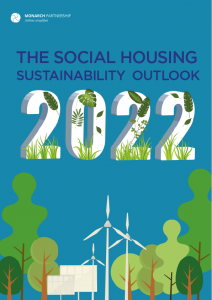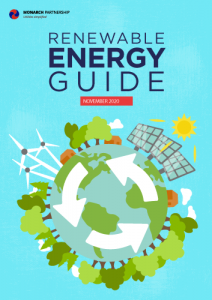Offshore wind is perhaps the UK’s most valuable renewable asset. Renewable generation has already reached record highs in the past two years. Rapidly evolving technology will continue to fuel an accelerated renewable energy transition. We look at the latest generation of HVDC (High Voltage Direct Current) transmission technology, and the part it could play in the green energy transition and our path to net zero.
Wind in our sails
The Prime Minister has outlined plans to have all UK homes running on wind power by 2030. It’s a radical transformation but projects like Viking Link and ongoing green investment proves it is completely feasible – provided we can harness the power available to us.
The catch-22 of offshore wind is that we find the greatest energy yields in the most remote locations. This is because the winds blow strongest the further away they are from the land. As such, the logistical challenges of construction further out to sea directly limit our capacity for offshore wind energy.
Maintenance, construction, and energy transfer are among the major challenges that far-offshore platforms face. While automated maintenance vehicles could provide an answer to the former, the latter is being overcome with a technology called HVDC.
What is HVDC?
Ambitious plans to rapidly expand our offshore wind capacity will rely on HVDC (High Voltage Direct Current).
HVDC is a form of energy transfer that, unlike HVAC (High Voltage Alternating Current), is most effective over long distances. However, the converter stations needed to support HVDC are far more costly to set up. This and its value over short distances are why AC dominates consumer energy transfer.
AC current changes direction along a wire or alternates at around 100-120 times per second. However, any disruption of this frequency can lead to power outages.
In the case of wind farming, where generation levels are not constant, and energy must travel very long distances, there could be an epidemic of power failures.
HVDC uses direct current as opposed to alternating current in the transmission of bulk energy packages. The upshot of that in this case is that transmission is less subject to fluctuating power levels.
Despite it’s much higher setup costs, HVDC’s promise of lower costs per unit distance could offer more savings over time.
In addition, recent technological advances mean that HVDC links can now transmit triple the amount of power through the same route as an AC line. Together these could solve remote wind generation permanently.
Part of our mission at Monarch is to help our clients navigate the transition to a greener world. That’s why we pride ourselves on our attention to the renewable energy and sustainability sectors and provide informed insights on new stories as they develop.
Our Renewables Energy Guide is a part of that commitment and reflects our desire to empower others with current market intelligence. We also provide a complete utilities management service to help you harness every unit of energy effectively. If you’d like to discuss any of these services, get in touch.
















